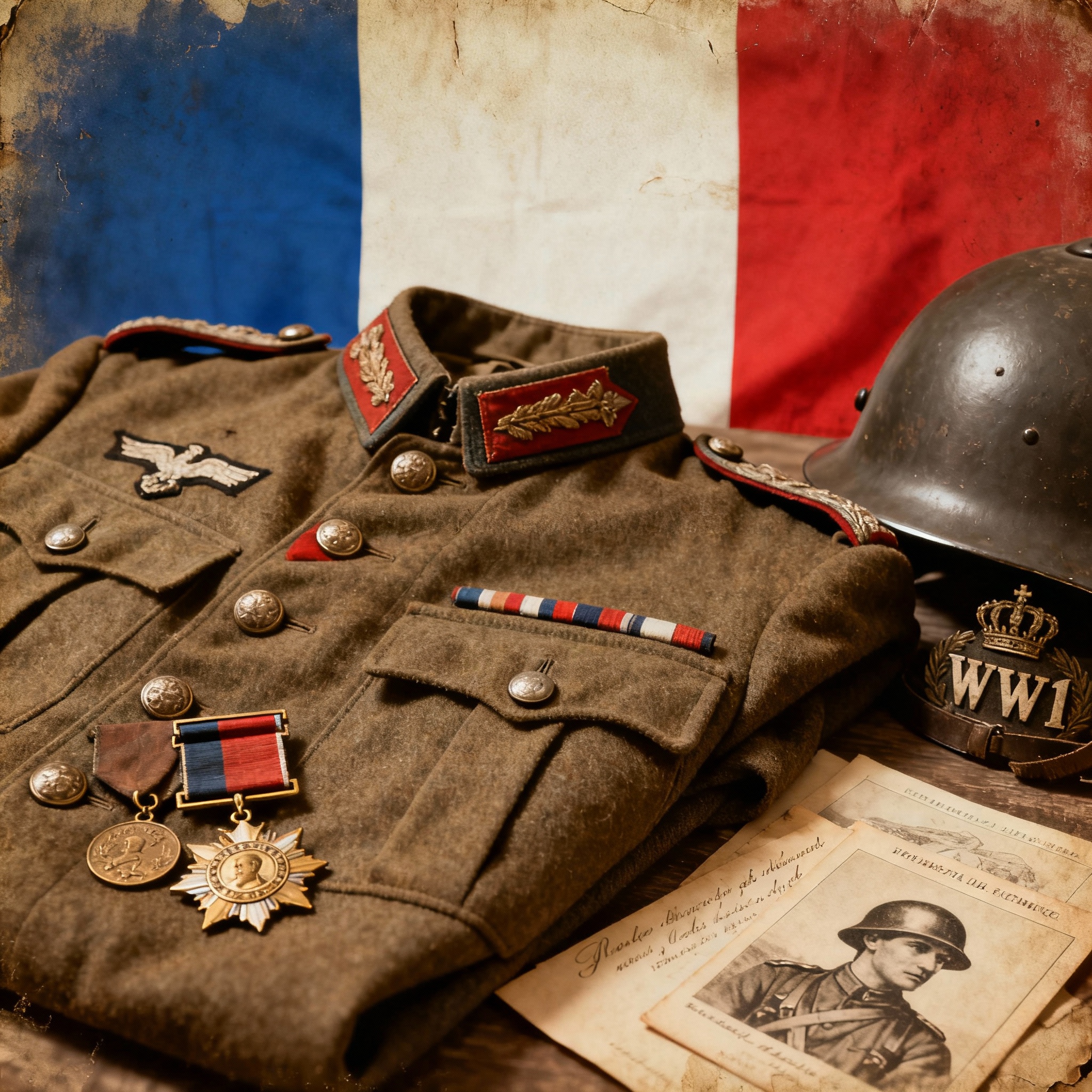
Unlocking the Legacy: A Complete Guide to French WW1 Uniforms and Collectibles
Published on Sep 29, 2025
Discovering the Past: Why French WW1 Uniforms Still Fascinate Today
Did you know that over 8.4 million French soldiers were mobilised during World War I, making their military gear one of the most diverse and widely used in the war? For history buffs and militaria collectors alike, the French WW1 uniform isn’t just fabric and thread—it’s a window into the lives of men who fought, endured, and shaped modern history.
Whether you're just starting your collection or you're a seasoned historian, understanding the layers of the WW1 French uniform can unlock incredible stories, artefacts, and value.
Let’s dive into the world of French WWI military apparel, how to source authentic items, what mistakes to avoid, and how this uniform connects with other key historical periods.
H2: Anatomy of a French WW1 Uniform: More Than Just a Blue Coat
The French WW1 uniform evolved significantly from 1914 to 1918, reflecting changes in warfare, logistics, and battlefield strategy. Initially dressed in vibrant blues and reds, French troops quickly adopted a more practical and subdued look as the war dragged on.
Key Components of a WW1 French Uniform:
- Képi or Adrian Helmet: Early war soldiers wore the traditional képi, replaced later by the Adrian helmet in 1915 to protect against shrapnel.
- Capote (Greatcoat): Thick woolen overcoat, often horizon blue in color.
- Tunic and Trousers: Made from wool in ‘horizon blue,’ designed for cold trenches and long marches.
- Puttees: Wool strips wrapped around the legs, used in place of boots for flexibility.
- Leather Gear: Belt, cartridge pouches, bayonet frog, and haversack.
Actionable Tip: When shopping for authentic gear, check for wartime manufacturing stamps inside the tunic or helmet. Items dated 1915–1918 are usually more valuable to collectors.
Evolution of Color: The Horizon Blue Shift
In 1914, French soldiers wore bright red trousers and dark blue tunics—a tradition dating back to the Napoleonic Wars. But the shocking visibility on the battlefield quickly made this obsolete. Thus began the shift to horizon blue, a powdery, grayish-blue wool designed to blend with the battlefield environment.
Real-Life Example: Reenactment groups today often source or recreate horizon blue capotes to match the style of late-war infantry units. This authenticity helps in public education and cinematic reenactments.
H2: The Collector’s Guide: Sourcing, Restoring, and Valuing French WW1 Uniforms
Whether you're aiming to buy your first piece or add to a prestigious collection, the French uniform WW1 category offers rich opportunities—and some tricky pitfalls.
Where to Find Authentic French WW1 Uniforms:
- Online auctions: eBay, Catawiki, and specialist militaria sites.
- Military fairs: Look for WW1-themed events and auctions.
- Estate sales: Some private collections go unnoticed by big dealers.
- Museum surplus shops: Occasionally, museums release duplicates or damaged items.
How to Spot Fakes or Reproductions:
- Material: Originals used thick wool; reproductions may feel lighter or synthetic.
- Stitching: Period uniforms often have uneven, hand-sewn areas.
- Markings: Legitimate pieces often include unit stamps or wartime date stamps.
- Aging: Be wary of "perfect condition" items claiming to be over 100 years old.
Pitfall to Avoid: Don't be fooled by artificially aged gear. Look for natural wear around seams, elbows, and buttons.
Commercial Trend: French Foreign Legion Collectibles on the Rise
With rising interest in the French Foreign Legion in Vietnam, collectors are bridging the gap between WW1 and post-WW2 gear. Some WW1 French uniforms were reused or adapted during colonial conflicts, especially by the Foreign Legion. This cross-era compatibility boosts collector interest.
Example: Some dealers now package French WW1 capotes as part of Foreign Legion display sets, especially with early Indochina-themed exhibits.
H3: Accessorizing the Legacy: Medals and Decorations
French Croix de Guerre with Palm: What It Means
The Croix de Guerre with Palm is one of the most iconic French military awards, often seen pinned to WW1 French uniforms in collections or museums. The “with palm” designation signifies a mention in dispatches at the army level—a high honour.
Actionable Tip: When buying medals, always verify the ribbon material and attachment system. Original versions often have brass palms, while reproductions use lighter, cheaper materials.
H2: How to Preserve and Display French WW1 Uniforms
Proper storage and presentation make a big difference in preserving your historical investment.
Preservation Tips:
- Store in climate-controlled areas – avoid attics or basements.
- Use acid-free tissue paper inside sleeves and folds to maintain shape.
- Avoid direct sunlight – it fades colour and weakens fabric.
- Use padded mannequins – sharp mannequin shoulders can tear old wool.
Creative Display Ideas:
- Wall-mounted shadow boxes for medals and small gear.
- Museum-style glass display cases for full uniforms.
- Thematic display: pair your WW1 French uniform with letters, maps, or photos from the same unit.
Bonus Tip: QR codes linked to digital stories or provenance documents are a modern way to bring life to your collection.
Conclusion: Why Now Is the Time to Invest in French WW1 Uniforms
The French WW1 uniform is more than just historical apparel—it’s a tangible piece of a story that shaped the world. With the growing popularity of historical reenactments, military-themed museums, and collectible marketplaces, now is the perfect time to start or grow your collection.
